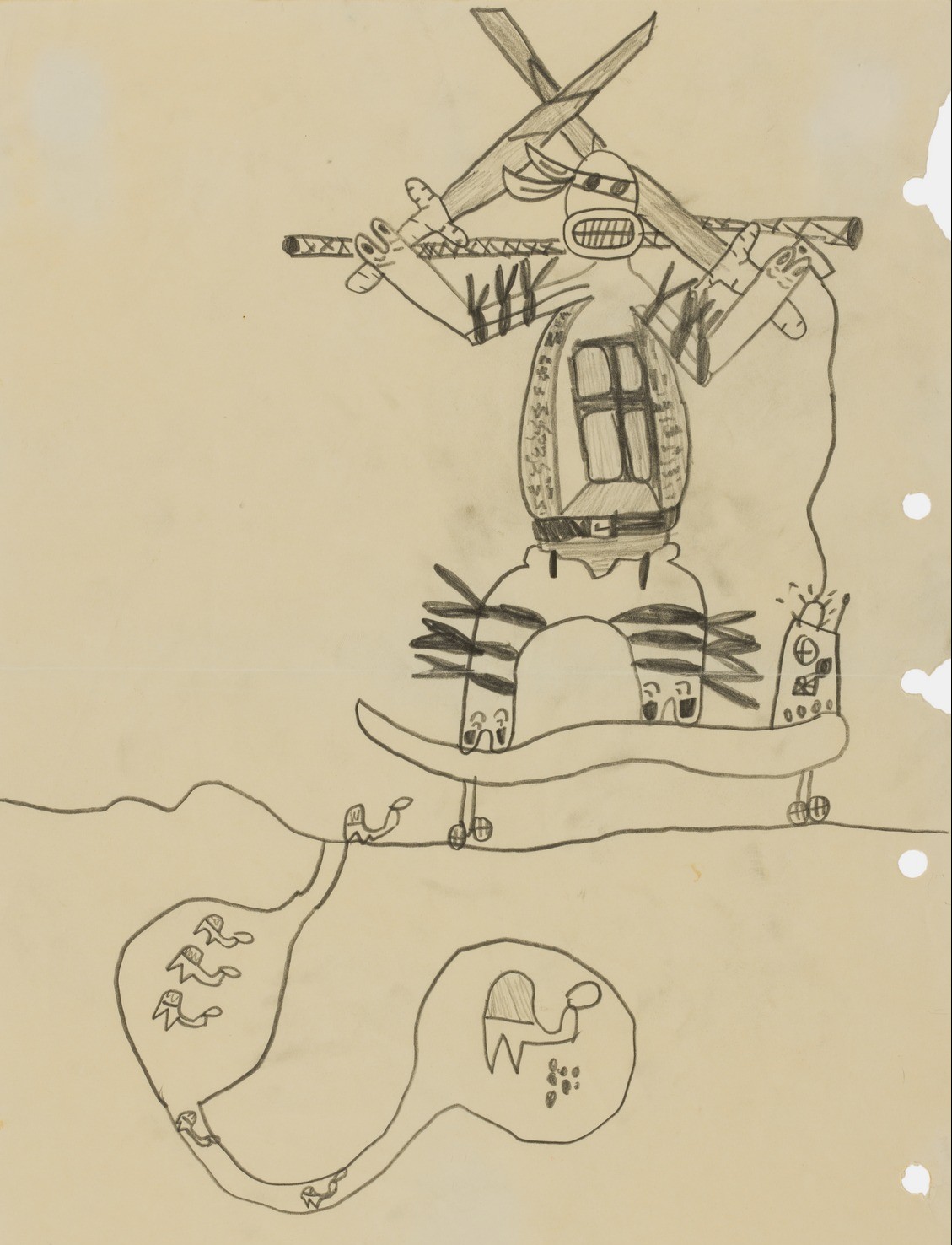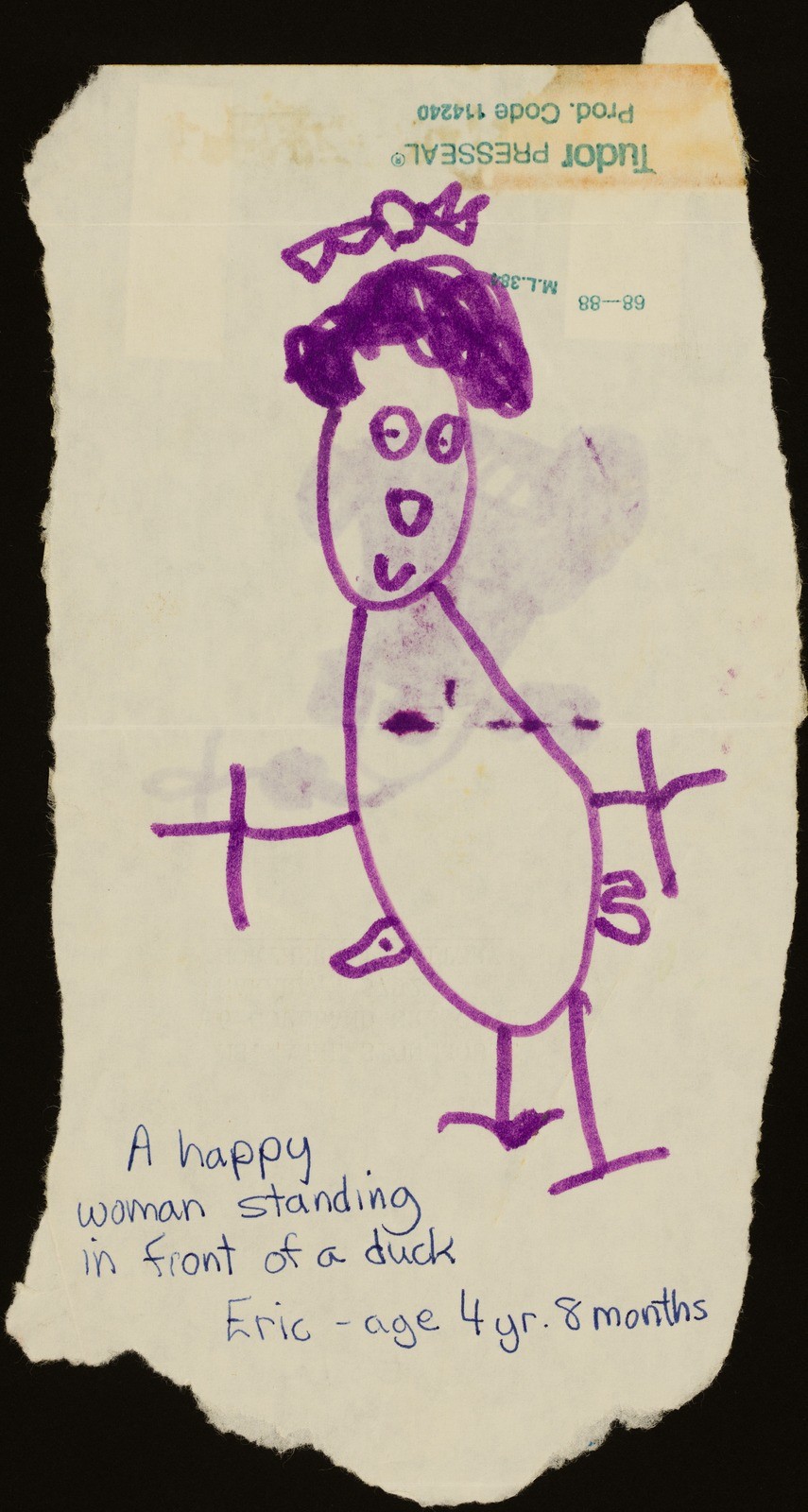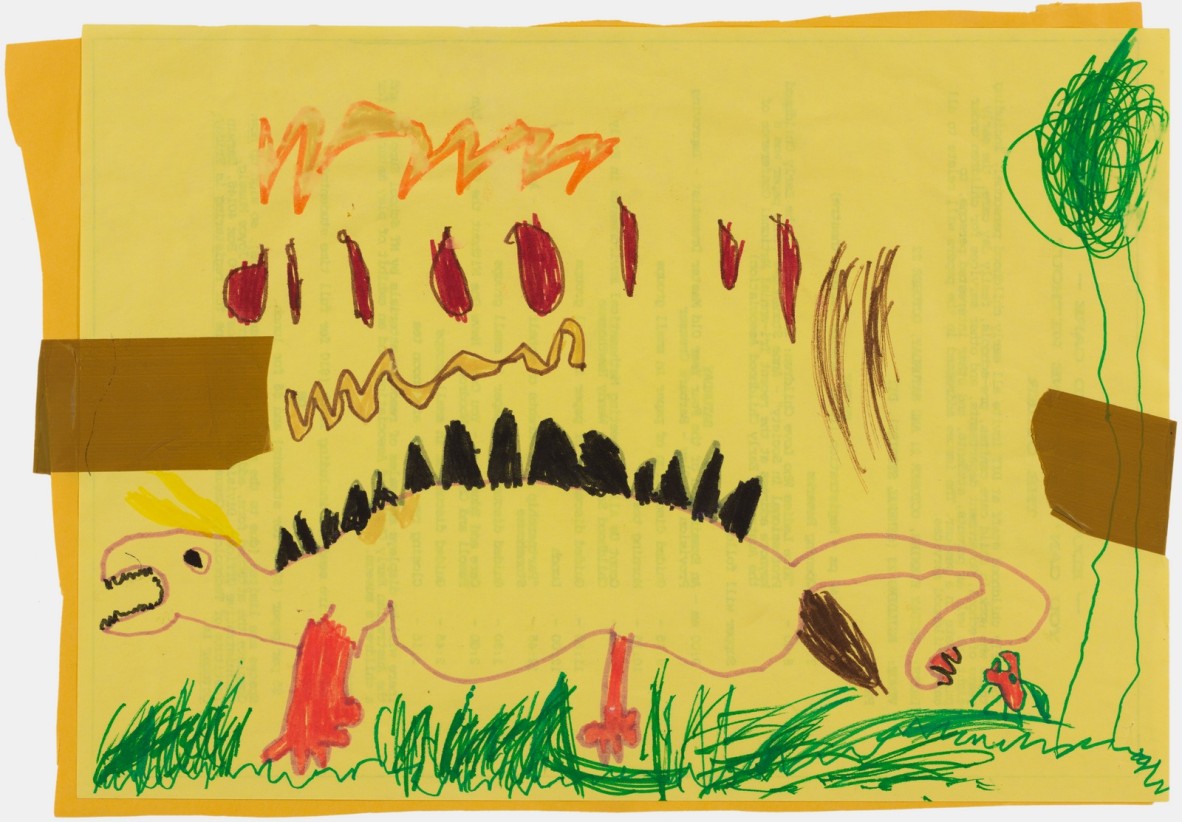Within the Dr. Barbara Piscitelli AM Children’s Art Archive is a special and unique collection of artworks from one young artist, The Eric Stonehouse collection. This collection fascinated me – who is Eric Stonehouse, how did he come to have over 400 artworks in the Children’s Art Archive, what is he doing now, does he make art, what does he recall of his early artistic life? In a serendipity of timing I was able to find out.
Eric, born in 1983 was prolific in his art making, taking opportunities with both time and materials to create art. Over two years in 1988 and 1989 Eric and his mother Anne Stonehouse, at the time, President of the Australian Early Childhood Association and a colleague of Barbara’s, collected 433 pieces of Eric’s artwork and posted them to her. Sent with handwritten letters to Barbara, the collection is a testament to the creativity of his young mind and the value that Barbara and Anne saw in it.
The collection contains drawings, mainly created at home and at the University where Eric’s mother and father both worked, with a small amount of material collected from his school life. The works made at home reveal Eric’s imaginative world as well as his interests in nature and popular culture, sometimes combining the two in the case of the Teenage Mutant Ninja Turtle standing over turtle hatchlings in an underground nest.

'Teenage Mutant Ninja Turtles', Eric Stonehouse, 1990, pencil.
In Eric’s pursuit to produce he was ready to use any canvas and mark making media at his disposal, with colourful felt pen and pencil drawings as frequent as those made with lead pencil and biro on torn pages and repurposed papers. The collection and some artworks include annotated information from Eric and some transcribed by his mother, Anne. The collection in its number and variety gives us the opportunity to experience a vignette of childhood imagination and artistic energy through this two-year period of Eric’s life.

'Woman with duck', Eric Stonehouse, 1988, felt pen.
Fast forward to 2019 as Big Voices : Children’s Art Matters starts to take shape and I bring out the Eric Stonehouse boxes again. On the same day that I am looking at a portrait by Eric of his mother I hear from Barbara that she has reached out to Anne and the Eric Stonehouse will soon be travelling home to Australia to visit with family.
Anne, Eric and his brother Daniel came to State Library and revisited his collection in January 2020, re-engaging with the artwork and the memories it evoked. Together with Barbara we brought out boxes of Eric’s work for the family to look through, letters that they had written to Barbara and photographs of Eric attending exhibitions Barbara had staged where his work was shown.
It was very special to be a witness of Anne, Eric and Daniel visit again their memories through Eric’s art and hear them ponder over and wonder through the collection with Barbara. I am happy we documented this to share. Find the interview with Eric Stonehouse and Barbara Piscitelli on the Big Voices: Children’s Art Matters web page and hear Eric and Barbara consider the significance of this collection.

'Dinosaur pooping', Eric Stonehouse, 1988, felt pen.
The Eric Stonehouse collections is unique within the Dr. Barbara Piscitelli AM Children’s Art Archive in many ways. This collection represents an abundance of ideas of one child, pursuing his interests and imagination. To me, that it exists is a testament to the philosophy underpinning Barbara’s work in creating and collecting the Children’s Art Archive. Children have the right to participate in artistic and cultural life, to share what they know, think and feel through writing, talking and artmaking. We as adults have a responsibility to make time and space for this to happen and when it does to celebrate the work children create and ensure children know how valuable their contributions are.
Discover more:
- Explore the 7116 Dr Barbara Piscitelli AM Children's Art Archive 1986-2016 through One Search
- Watch An Interview with Eric Stonehouse with Barbara, Eric and his family
- Visit Big Voices : Children's Art Matters online
- Follow #slqBigVoices on Instagram
Comments
Your email address will not be published.
We welcome relevant, respectful comments.